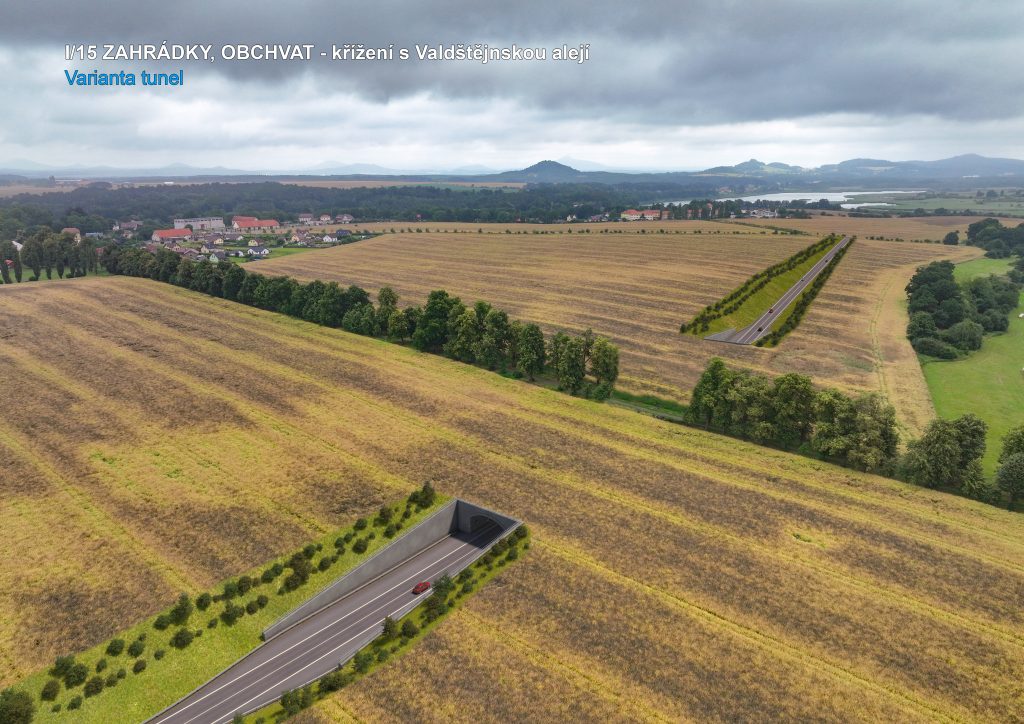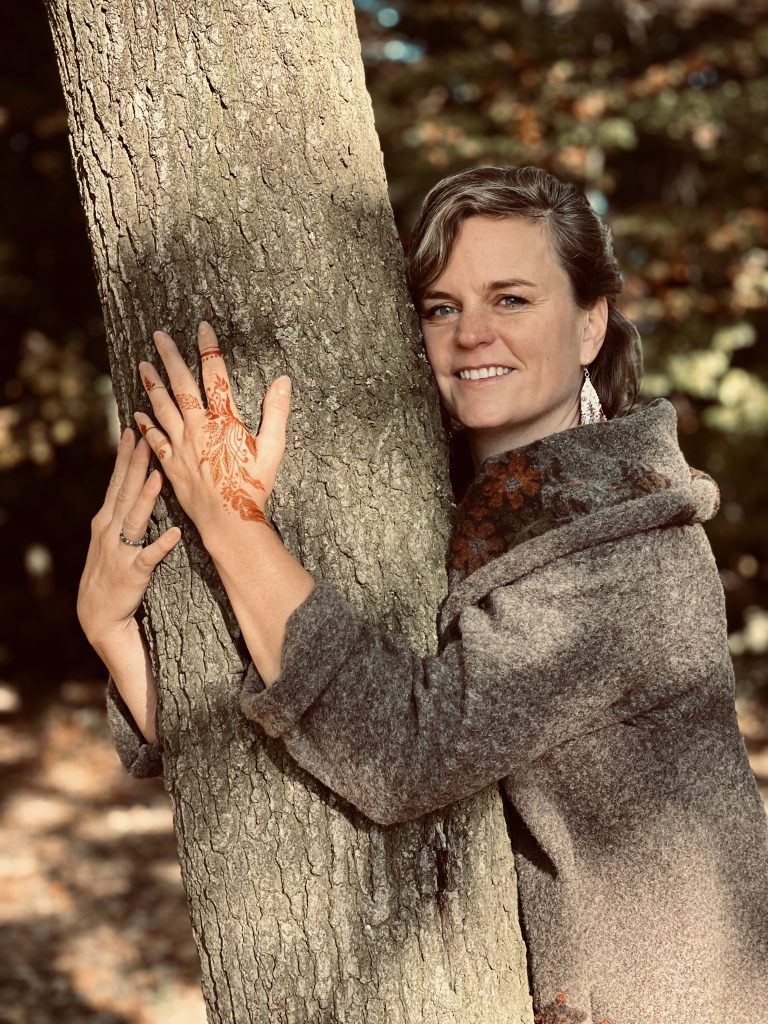This time we talked to Magdalena Kopecka, a planner who is responsible for assessing the impact of planned buildings on the landscape in Valbek. What does she decide and how does the actual field survey take place? What are the main obstacles to building in the Czech landscape? You can find out all this in the following lines.
I have long perceived the high level of Valbek’s design activity. The profession in which I work is a relatively narrow area within the Czech Republic, so I knew my supervisor, Jiří Bednář, from trainings and seminars. It was also decisive for me that he fit me as a person – you know, you just like to work with people you get along with.
In the office, it’s simple. I always start with coffee, read my mail, work, have lunch and work again. It’s more interesting in the field, where we go a lot. That’s what’s great about this job, you’re out and about, travelling and at the same time exploring the Czech Republic, looking at different places. For me, field work means either measuring and mapping trees or, in the case of landscape, documenting the landscape, its condition and values in the area affected by the planned construction. Most often these are transportation infrastructure structures – roads, highways, bridges.
The assessment of any construction project in the landscape, whether it is a linear construction (i.e. a road for example) or a sub-structure such as a bridge, is based on a field survey. This involves taking photographs of various views or vistas across the landscape to the site of the proposed development. But in reality you are assessing a much wider area – the area where the planned construction will be visible.
Sometimes I have visualizations of the intention to hand. The investigation takes place during the year, ideally also during the growing season, when the landscape has a “green screen” of present vegetation elements (avenues, copses, memorial trees). You must also take note of natural and cultural phenomena, such as natural formations, historic small buildings (crosses or shrines), negative landmarks, etc. For these you then assess the importance and value of their presence in the landscape.
 |
| I/15 Zahradky, bypass – crossing with Valdstejnska avenue |
Before going into the field I study map materials, including old historical maps, so I can pick out suitable places for a tour. Each landscape is unique, it has a so-called genius loci, or spirit of place. It is a set of extraordinary qualities and meanings characteristic of a particular settlement, linking a particular human settlement to a particular natural environment in a unique way. You will therefore find a different genius loci at Karlštejn, for example, and a different spirit of place in the landscape of Lake Mácha.
The assessment itself is then prepared in my office from many documents. These are usually field data, historical maps, records, and current zoning documents.
Not specifically, I don’t think. Every building has an impact on the landscape, my task is to assess to what extent. I am therefore more concerned with whether or not such an intervention is acceptable for the landscape. In general, it is usually better for the landscape, for example, to run a road in a cut. Compared to an embankment, it is less visible. The same is true, for example, when locating a building in a valley compared to a building on the horizon.
The question of landscape relief is therefore crucial for the evaluation of the intervention. A project that takes into account the relief of the landscape or uses vegetation elements that even partially cover the building is always more favourable. Logically, the greatest visual impact on the landscape is most often represented by bridges or large buildings located in flat agricultural landscapes with no vegetation.
The impact of linear construction on the landscape is always an impact on nature, even if you try to come up with the most nature-friendly option.
However, migration studies and other assessments are also used for this purpose, evaluating the best possible options for the technical solution, including the relief of the landscape and its permeability for animals. In the context of the assessment of the building on the landscape character, I note both the visual and compositional disturbance of the overall landscape space by the planned project. Take, for example, the large areas of arable land without trees and paths, such as around Prague. If you propose a motorway that runs for several kilometres, it will have a very different effect than if you place it in a more fragmented landscape where there is a lot of green space.
Vegetation elements are essential to the composition of the landscape. They can help to integrate the building better, to hide it a little in the landscape. That way it won’t disturb the landscape as much.
You know, we have tools to protect the landscape. Unfortunately, the problem is that municipalities’ spatial (regulatory) plans are not always drawn up with them in mind, and especially to protect the values of the landscape in question. The level of processing varies.
The most common problem is the siting of inappropriate buildings in the landscape – and unfortunately the principle is that where one such building has gone through, siting another similar one is easier.
In the case of transport structures, the disturbance of the landscape character is often associated with landscape fragmentation – division into smaller and smaller areas of the territory, which are then more difficult for animals, but also for people.
It is a large number of constants that enter the equation, and the result is then the sum of all the acting elements. Of course, somewhere above all this is the public interest, but even that should not determine the outcome of the equation. As you can probably see from the interview, assessing the impact of a development on landscape character is not always an easy matter and there are procedures and principles to follow. Interestingly, in practice, assessments from different preparers often differ.
The biggest challenge for me is often time. It’s difficult to meet deadlines when the design process is demanding, or when multiple projects come together. And balancing that with my personal life is sometimes not easy.
But I’m enjoying moving on in the field – I plan to get certified as a European Arborist. This will give me an official practice in tree assessment, a kind of confirmation, a culmination of my expertise. And of course, I’m also looking forward to other new projects that will teach me and push me further, whether they involve vegetation management, dendrological surveys, or landscape impact assessment.
What I enjoy most about working at Valbek is the variety – I have a pretty wide range. The opportunity to work in the field is also a great benefit for me, as I enjoy sports and being outdoors.
 |
| Ing. Magdalena Kopecka, Project Manager, Environment Group, Valbek, spol. s r.o. Liberec |
 | |
| Bc. Adéla Hajská | |
| Personnel department clerk |
|








| About the project | Categories | News | Editorial office | ||||||||||||
|
Valbek Story is an information portal in the field of design, infrastructure, construction and new technologies. It represents the work and achievements of the important Central European design and engineering office Valbek-EU, a.s., its subsidiaries and partners. If you want to tell us anything, ask a question, offer your observations, contact the editors. You can also follow us on social networks.
|
|
Do you want to cooperate with us? We are preparing great projects, and we are always interested in quality collaborators. Contact us.
Data protection |